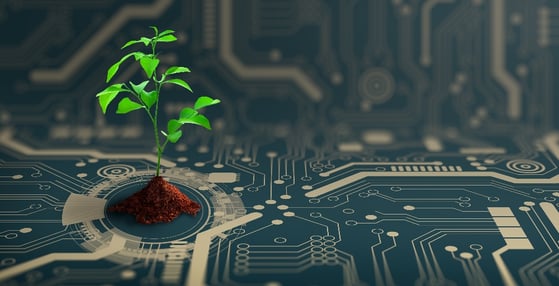Back to articles
Smart circularity promises a less wasteful future

Since the 1980s the pace of development in the global electronics industry has outstripped that of practically any other industry. It has become a leading sector of the economy for some countries and a heavyweight contributor to total industrial production in many others. The industry’s race is far from run. Consumer electronics alone is a trillion-dollar industry that is expanding every year, and the connectivity explosion brought by the IoT will further expand electronics’ reach.
But while the opportunity is huge, we must only grasp it while ensuring that sustainability is built into everything we do. One key challenge is e-waste. This is one of the fastest-growing refuse streams, with some 50 million tonnes generated yearly. According to the United Nations University, today, only 20 percent of e-waste is recycled, while 80 percent is dumped, illegally traded, or recycled under uncontrolled conditions. The concept of the circular economy promises to help address this unsustainability.
Round and round
The circular economy considers strategies including the five 'Rs'—reduce, reuse, repair, recycle and restore—and has the potential to contribute to multiple United Nations’ Sustainable Development Goals (SDGs). According to The Connected Consumer Report 2030, produced by business think tank The Future Laboratory for Vodafone Smart Tech, ‘Smart Circularity’—the circular economy as it relates to connected technology and the IoT—can help the world shift away from linear consumption to an economy where resources are fed back into a closed loop of recycling, reusing and sharing.
By 2025, improved resource productivity could deliver an annual net material cost saving of $600 billion in Europe alone, according to the Ellen MacArthur Foundation, and cut greenhouse gas emissions by 39 percent. But to reach these ambitious targets, chip makers and electronic device manufacturers must play a critical role.
Reuse and recycle
Tech products should emphasize reusability, and developers must consider recyclability and multi-purpose use in their designs from the beginning. Planned obsolescence in all its guises, from contrived durability and repair prevention to software lockouts and batteries that can’t be replaced, belongs to the last century.
Consumers should expect new devices to be compatible with several generations of previous technology. This forward and backward integration helps cut down on e-waste and over-consumption. Meanwhile, easy-to-access firmware updates will increase longevity, ensuring end users don’t have to buy new hardware to access the latest product features.
This is an approach that Nordic Semiconductor has followed for years. The company’s products feature robust and backward-compatible design, over-the-air (OTA) upgradable software, and battery life that could see many IoT devices last well into the next decade if deployed today. Nordic’s durable chip architecture has been designed with an ambitious future-proofed philosophy, offering powerful processors and memory beyond most existing requirements, but which will support the applications tomorrow’s (and the day after tomorrow’s) designers will dream up.
Transforming consumption and waste
The Connected Consumer Report 2030 also notes that beyond the electronics design and manufacturing community, IoT technology can also help society to embrace smart circularity with the potential to transform how we view and manage consumption.
Every day at Nordic, we encounter customers building smart solutions expressly designed with sustainability and waste management in mind. There is no better example than German firm adhoc networks. The company has launched a smart waste management solution capable of monitoring fill levels in waste containers. The nRF9160 SiP-powered device allows waste management businesses to allocate rubbish collection resources and avoid overflow remotely.
Self-learning fill level prediction modelling and dynamic route simulation can optimize rubbish collection crew productivity, helping reduce CO2 emissions by only scheduling waste collection when containers are full. According to adhoc networks, emissions from waste disposal businesses can be reduced by up to 40 percent when using the tech (ref: adhoc networks blog 'Why fill level monitoring in waste containers makes sense').
Smart (green) business
The German company also practices what it preaches regarding resource management and smart circularity. Through adhoc network’s subscription model customers pay a monthly fee and get everything, including sensor hardware, as part of the package. The company monitors the health of the wireless sensors and provides OTA firmware updates to keep everything operational. If a technical defect can’t be remotely solved, the company sends a replacement sensor, and old sensors are refurbished and reused to make them as reliable and long-lived as possible.
The company is one of many Nordic customers not only following the UN’s SDGs in their own business but also helping other businesses and the community achieve a more sustainable future. The stakes are high. As The Connected Consumer 2030 Report notes, we have already reached the limits of linear consumption. We can no longer simply take, make, use and dispose, we need to find a better way. The IoT, wireless connectivity and smart technology is at the heart of the solution. Nordic and its customers are up for the challenge.


